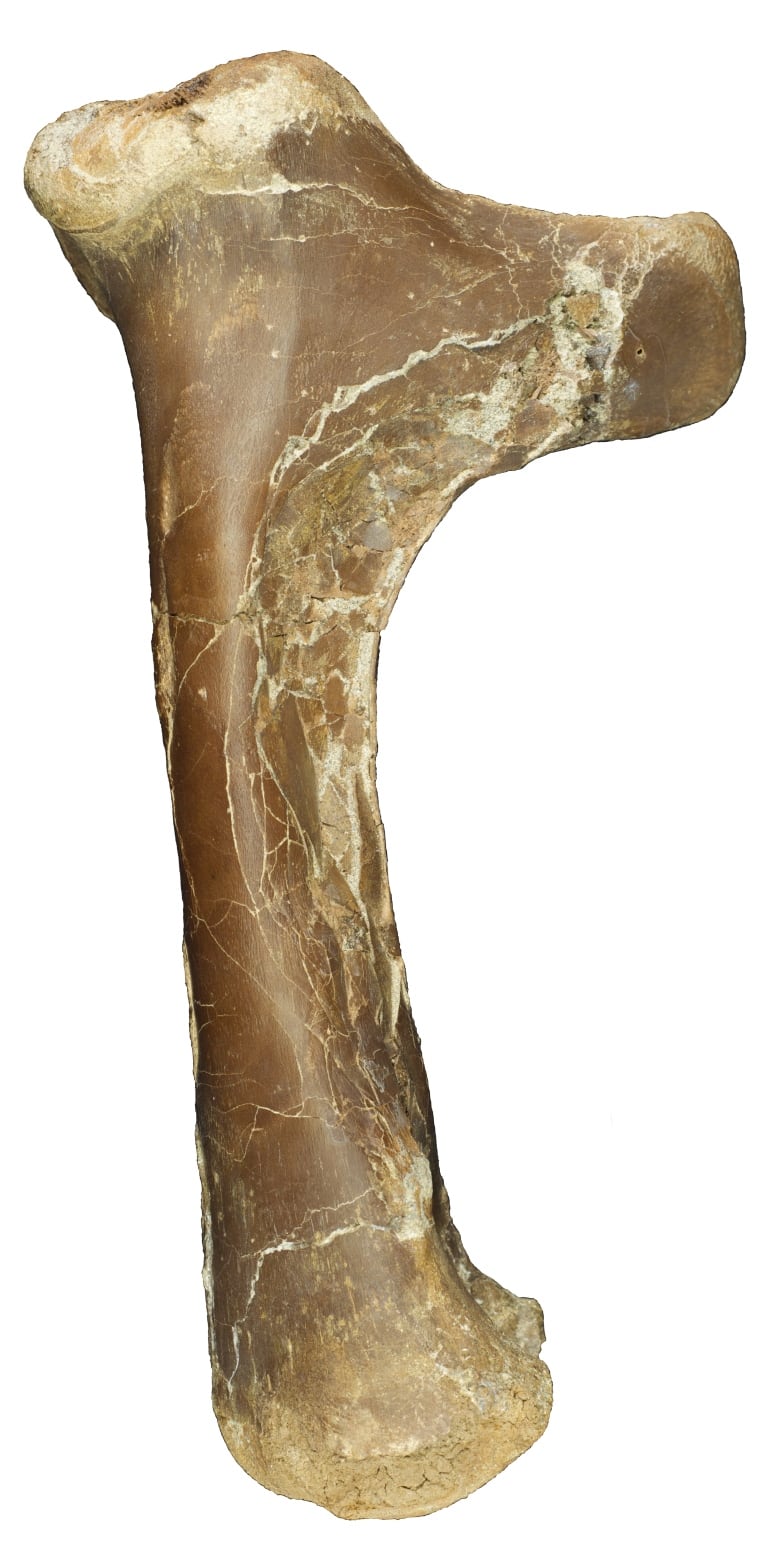A huge, flying reptile that weighed as much as several adult humans combined and had the wingspan of a small plane soared over Alberta during the Age of Dinosaurs. Now, it’s been identified as a new species.

A huge, flying reptile that weighed as much as several adult humans combined and had the wingspan of a small plane soared over Alberta during the Age of Dinosaurs — and researchers have now identified it as a new species.
The species, Cryodrakon boreas, means “frozen dragon of the north wind,” said David Hone, lead author of a paper published Tuesday in the Journal of Vertebrate Paleontology.
The species was identified from fossils collected by paleontologists and local residents over several decades in Alberta’s Dinosaur Provincial Park.
Hone, a paleontologist at Queen Mary University of London, himself has looked for pterosaur fossils in the park annually for seven years, but hasn’t yet found any. Those trips, did, however, help inspire his name for the new species.
“It’s a beautiful, stark landscape in winter, but dear God it’s cold and snowy,” Hone told CBC News. “We wanted to try and evoke that.”
The study describes an animal that would have been about as tall as a giraffe, with similarly long legs on a short body, a mass of up to around 250 kilograms and wings that stretched about 10 metres from tip to tip. It’s not much smaller than the largest pterosaur ever found, excavated in Germany, which had a wingspan of about 12 metres. That’s longer than the 11-metre wingspan of a Cessna Skyhawk four-seater plane.

“These things have great, big long necks as well,” said Hone. He said that in addition to flying, they would have walked and run on all fours, likely with a giraffe-like gait that moves both legs on one side at the same time to avoid tripping.
The new pterosaur lived about 77 million years ago, during the Cretaceous period, when Dinosaur Provincial Park was the swampy, subtropical home to dinosaurs like Albertasaurus and Chasmosaurus. Cryodrakon probably preyed on lizards, small mammals and perhaps even baby dinosaurs..
The new species belongs to a group of huge pterosaurs called Azhdarchids that had large legs and feet, and lived inland.
The most well-known among them is Quetzalcoatlus, first named from fossils in Texas in the 1970s. The problem, Hone said, was that for a long time it was never properly described, making it impossible for others to confirm whether other fossils were the same or different.
Now, with access to many Quetzalcoatlus and other pterosaur fossils from around the world, he and paleontologists at the University of Southern California and the Royal Tyrrell Museum in Alberta were able to carefully compare fossils from about a dozen individuals collected at the museum. They ranged from a baby with a wingspan of just 1.5 metres to an adult with a wingspan of more than 10 metres.
Stories behind the bones
The oldest among them was a toe bone collected by a woman name Hope Johnson, an amateur paleontologist from Ralston., Alta., in Dinosaur Provincial Park and described by Dale Russell of the National Museum of Natural Sciences in Ottawa in 1972.

But the most scientifically valuable were the neck, leg, shoulder and wing bones of a single young pterosaur found by legendary dinosaur hunter Wendy Sloboda in 1992. It had been eaten by a velociraptor-like carnivorous dinosaur that had left tooth marks and even got one of its teeth stuck in one of the bones. The researchers who described it, though, suspected it was scavenged rather than hunted, as the pterosaur already had a wingspan of about five metres, and the meat eater was likely less than two metres long.
By examining those fossils, the researchers noted some unique features compared to other pterosaurs, including a different number of holes in their back bones, which were hollow like bird bones to make them lighter for flight.
In addition, Cryodrakon’s neck, though still enormously long, is “a little bit shorter and fatter” than Quetzalcoatlus’s, Hone said.
Cryodrakon may not have been the only species of pterosaur in Canada.
Two pterosaur fossil discoveries were previously reported on Hornby Island, B.C. One of them was originally named as a new pterosaur species based on part of a jaw, but later identified as belonging to a fish, not a reptile. The other, an arm bone found in 2008, was confirmed as a pterosaur in 2016, but the cat-sized creature hasn’t been formally identified as a species.

